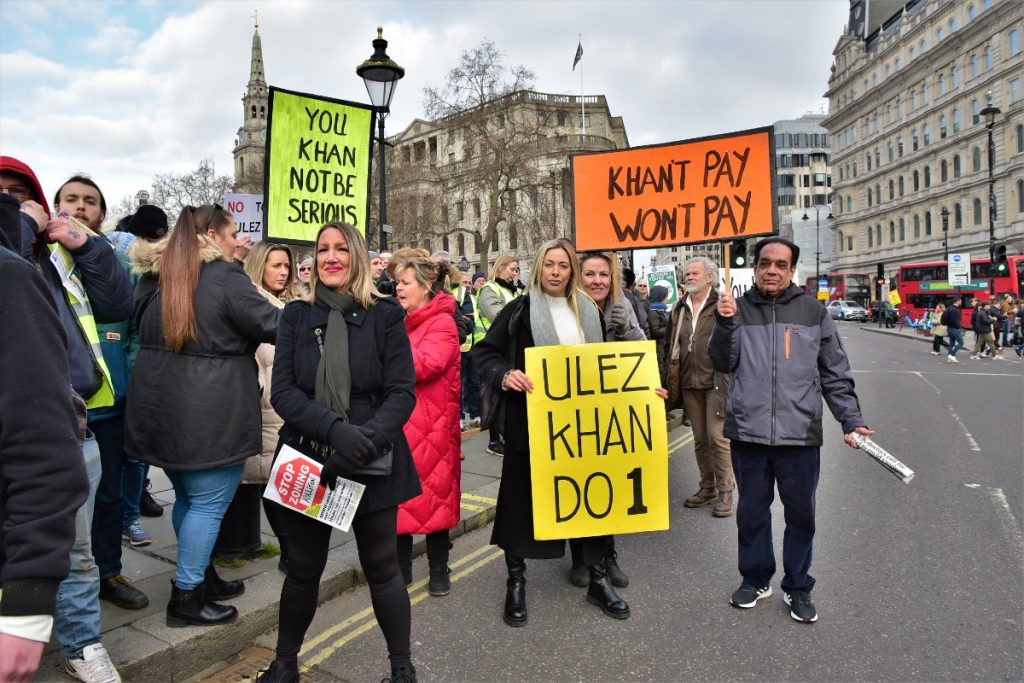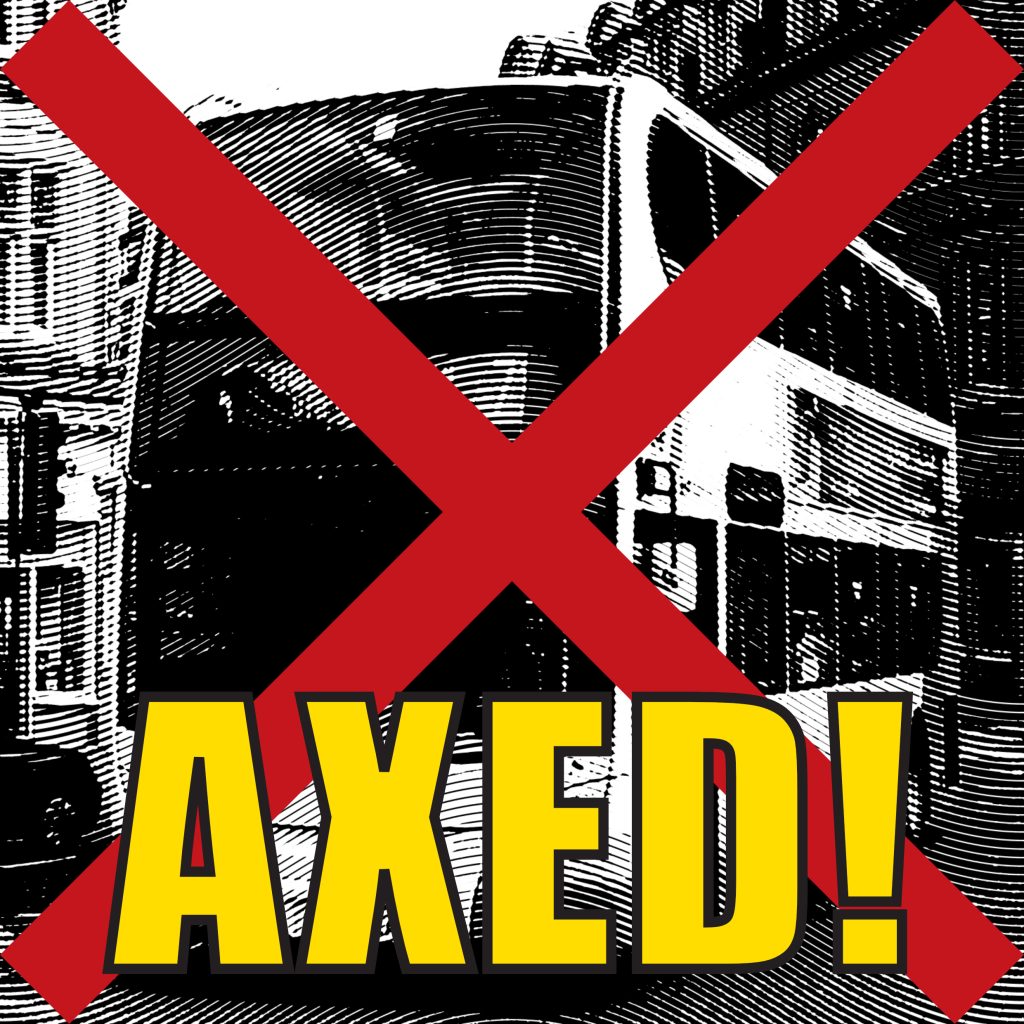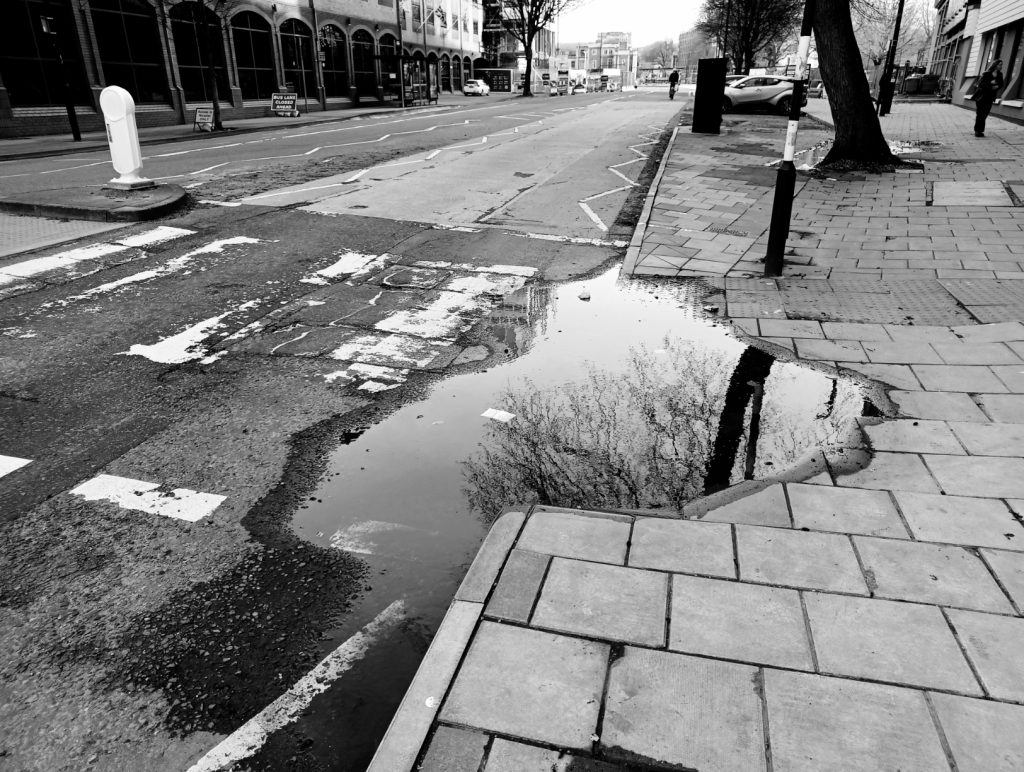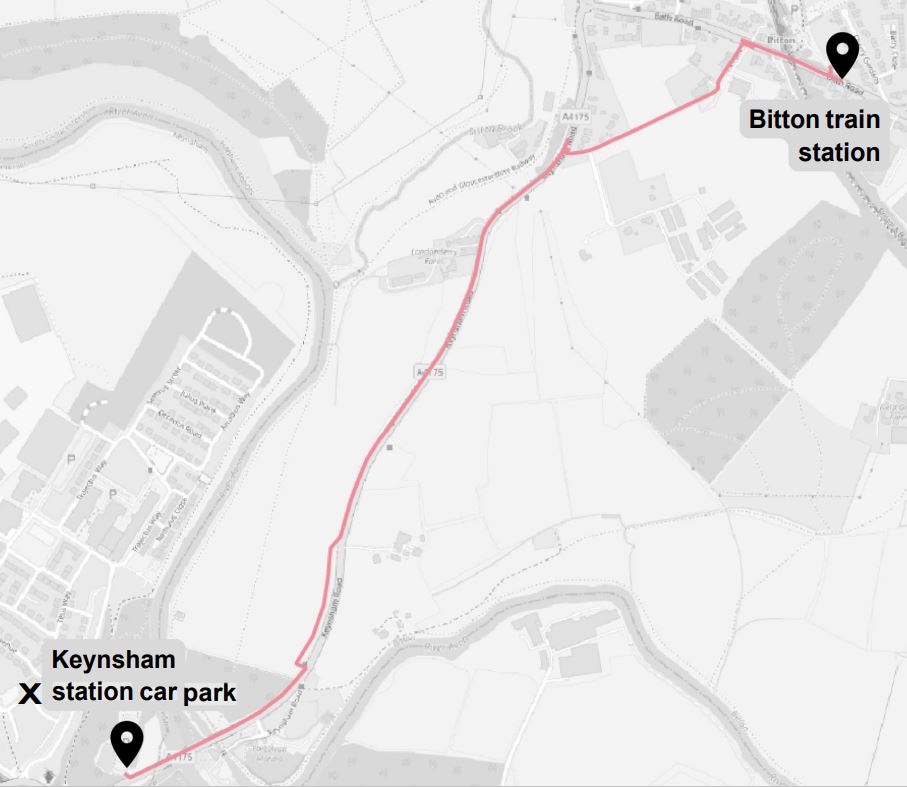
This post was first published on The Stirrer. As you can tell from the title, it’s asking a question about how much mobility those who presume to rule over us are willing to allow us. There’s been a lot written about the restrictions placed on drivers in urban areas. As a non-driver, I wanted to look at the other side of the equation. Namely the obstacles non-drivers face in getting around from crap public transport to pedestrian and cycling infrastructure that leaves a lot to be desired. The post is written from my experiences of trying to get around and between the cities of Bristol and Bath in the West of England. That’s because I think it’s always good to cite real life examples when making a case.
With the controversies surrounding the concept of 15 minute cities, Clean Air Zones (CAZs) and Low Traffic Neighbourhoods (LTNs), a fair number of people have felt that a war is being waged upon drivers. As I’m a non driver, I can’t comment on that perception from first hand experience. However, having talked to a number of tradespeople whose work obliges them to drive into and around the cities of Bristol and Bath near to where I live, I can sympathise with the frustrations they feel as they encounter congestion caused by CAZs and LTNs displacing traffic. The issues around 15 minute cities, CAZs and LTNs are discussed at some length in this piece I wrote back in February: The future of movement on a finite planet 20.2.23.

The perception that there is a war on drivers has informed a number of protests and acts of direct action against traffic monitoring infrastructure such as these ones in London: Sadiq Khan issues warning to Ulez protesters who vandalise cameras – Evening Standard 29.3.23. A number of commentators have written pieces condemning what they view as a war on the motorist. Here are a couple of examples of what’s being written: The war on motorists is out of control – James Woudhuysen | Spiked | 18.7.22 and: The war on cars – Charlotte Gill | The Critic | 23.1.23. Before anyone pipes up, yes I know the two articles cited are from publications that some people see as ‘problematic’. I’m including them because I think people need to read the breadth of opinion that exists on the thorny issue of how we all move around and the debate over what is and isn’t sustainable.
As you can guess from the title of this piece, I’m posing the question as to whether there’s a war on movement. I don’t want to get drawn into the rows about whether or not there’s a war on drivers because I’m starting to think that things are actually a fair bit deeper than that. As a non-driver who tries to get around Bristol, Bath and points in between by public transport and on foot, my experiences are leading me to conclude that the bastards who presume to rule over us have, despite the green rhetoric they come out with, got it in for those of us who don’t drive.
People are being exhorted to leave the car at home and instead, use public transport or ‘active travel’ a.k.a. walking and cycling. We’ve been told that car use across the Bristol region has to halve by 2030 in order to meet the net zero climate target. A target that we argued was pretty much impossible to meet as things currently stand: An impossible target? 23.3.23.

Pretty much impossible because to put it bluntly, public transport across the region, both bus and train, is barely adequate and has no capacity to accommodate increased demand. This is particularly the case when bus services are being cut and cut again: Real life consequences of bus cuts… 12.2.23. This is the latest example of what happens when vital bus service are withdrawn leaving non-driving residents on an estate effectively isolated: Bristol bus cuts: Residents feel ‘stuck’ on estate after last service is cut 21.4.23.
This is what sticks in my craw and that of many others. Namely being preached at by city and regional leaders such as Marvin Rees and Dan Norris about the need to travel in a more sustainable fashion while at the same time, through a combination of hubris and ineptitude, they preside over bus cuts that are leaving people stranded on their estates and in their villages. With a rail network that was drastically slashed back in the 1960s, public transport users in Bristol, Bath and the areas in between, are left with no choice but to rely on a bus ‘service’ that’s in a state of crisis. You can understand why car drivers living in the vast swathes of Bristol and Bath that do not have access to a rail service are reluctant to leave the car at home and put their trust in a bus ‘service’ that all too often, fails to deliver.

The rail network? There was a pretty decent network around the region until the misguided cuts in the 1960s destroyed a fair sized chunk of it. What’s left of the local rail network leaves a lot to be desired. Living in Keynsham, it’s great that we can get to both Bristol and Bath in under ten minutes once we’re on the train. The problem is that on average, there’s only one train an hour to either destination. Quite often, that will be a two or three coach diesel multiple unit that has seen better days. If you get a four coach unit turn up, you’ve hit the jackpot! Then there are the delays. We’ve lost count of how many times we’ve been left waiting at both Bristol Temple Meads and Bath Spa because of a train failure, signal failure or track failure. All the result of years of chronic under-investment in rail infrastructure and rolling stock.
So, here we are, not owning a car and relying on public transport and walking to get around. When it comes to our carbon footprint and impact on the environment, we’re more than doing our bit. What do we get in return for this? An utterly crap public transport system that has left us stranded on a fair few occasions.
Sure, there are a few piecemeal schemes to re-open a few of the lines that were shut in the 1960s and to build a few new stations. All well and good but, there’s no serious discussion we can find about how to increase rail capacity to help achieve the aspiration of cutting car use across the Bristol region by 2030. Assuming that draconian measures are implemented that actually does reduce the number of vehicle journeys across the region, what happens if rail capacity is not proportionally increased? Will we get to a situation where rail travel is rationed to those who need it and retired, so called ‘useless eaters’ like us are pretty much confined to Keynsham? Don’t get us wrong, we love Keynsham but it’s nice to be able to get out to other places a few times a week… Before anyone screams ‘conspiracy theory’, just take some time to think about what was considered ‘conspiracy theory’ just a few years ago and is now becoming established fact.


Then there’s the so called ‘active travel’ option… It depends what you mean by ‘active’, doesn’t it? When it comes to Bristol, as you can see from the above images, all too often ‘active travel’ means negotiating flooded pedestrian underpasses and trying to not trip over on broken and uneven pavements. Walking around Bristol involves a lot of ‘active’ in dealing with pretty rough terrain. If the likes of Marvin Rees and Dan Norris want us to walk around more, the least they can do is spend some money on making walking around the cities and towns in the region a less hazardous and more pleasant experience.
We’re not cyclists. We’d like to be cyclists but there’s a reason for us not being cyclists. Namely that the cycling infrastructure in the region is patchy and in too many cases, of poor quality. We have every respect for those in the region who do cycle because every time they venture out, they’re taking a risk of injury or worse because of poor cycling infrastructure and to be frank, some pretty piss poor and dangerous driving.
Yes, there are some schemes here and there aimed at improving the experience of walking and cycling but they are few and far between and to be brutally honest, they’re piecemeal. Here’s one example, a scheme under consideration by South Gloucestershire Council to make walking and cycling along the A4175 from Willsbridge down to near Keynsham a safer and more pleasant experience.

As far as it goes, it’s a good proposal, as far as it goes that is… It ends at the station overflow car park just over the River Avon in Keynsham which is under the jurisdiction of Bath & North East Somerset (BANES) Council. The stretch of road leading up from the car park to the crossing leading over to the railway station at Keynsham that’s under the jurisdiction of BANES has a pedestrian footpath down just one side. A narrow pedestrian footpath along a road that bends so you can’t see who’s coming towards you. So narrow that it’s difficult for people to pass each other safely without getting dangerously close to the flow of vehicles which includes some heavy duty lorries. As for meeting a cyclist coming along the pavement downhill towards you, you’d best hope that doesn’t happen!
Suffice to say, I did respond positively to the consultation for this scheme that was put out by South Gloucestershire Council but I did emphasise that to make it work properly, they need to enter into some serious dialogue with their colleagues from BANES. Given how fractious relations can be between the local authorities in the region, I’m not entirely confident that will happen! That’s what we mean by piecemeal solutions that provide some limited benefit but where there’s no sign of serious joined up, holistic thinking. You’d like to think that those proposing these schemes mean well but you can’t help thinking that these are little more than token gestures. Gestures that are the equivalent of a few crumbs thrown out to the hungry but which come nowhere near providing a real, lasting solution.
So there we have it. On the one hand, it feels like we’re being bombarded with a constant stream of rhetoric telling all of us that in order to reduce our carbon footprint, we need to leave the car at home, even give it up altogether, and instead, use public transport and/or various means of so called ‘active travel’. On the other hand, as cited above, there are numerous obstacles being put in the way of anyone who wants to use public transport or walk and/or cycle. The rhetoric stands in stark contrast to the failure of the delivery of the means to allow people to confidently rely on public transport or walk and cycle in safe and pleasant conditions. So stark a contrast that people can be forgiven for thinking that those who presume to rule over us don’t actually want us plebs freely moving around.
People aren’t mugs. They can see that without the delivery of a decent mass transit system across the region and safe walking and cycling, the rhetoric urging them to give up their cars is utter bullshit. They can see that no serious, joined up efforts are being made to deliver that mass transit system or make walking and cycling a genuinely attractive option. In the light of this, what are they supposed to conclude? Concluding that perhaps those who presume to rule over us don’t want us mere plebs to enjoy freedom of movement, whether that’s driving, using public transport or walking and cycling, is not conspiracy theory. It’s a recognition that one the one hand, being forced off the roads and on the other, not having viable public transport options and piss poor walking and cycling ones means one thing. Namely that the bastards want to effectively lock us down for good. What other conclusion can you seriously draw from this?
